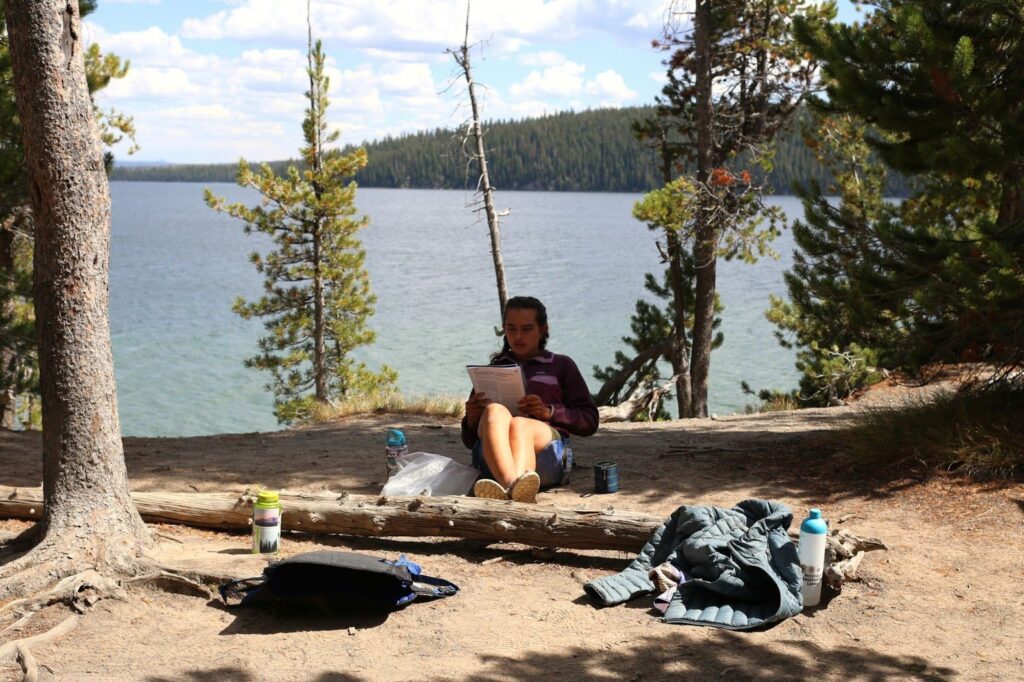Over the past three weeks, we’ve learned from the stories of the land and its stewards. The land’s stories are not always as straightforward as the humans’ stories. We’ve played detective, observing nature, grounding ourselves so that we could listen to the earth and piece its stories together. The more we observed, the more questions we had and the more humility and respect we developed for the interconnectedness of natural systems. But what does it mean for something to be “natural?” Should we, humans, interfere with natural systems? We discussed these questions, and so much more, recognizing the complexity of the world and in all of us.

These questions were on my mind as we ventured into the backcountry of Yellowstone National Park. A beautiful place that bears a bloody history that too often goes untold. The forceful dispossession of Indigenous lands in the name of preserving “pristine wilderness.” The displacement of people who, like us, are imperfect but who celebrate themselves as natural beings, learning from and working with the land. Is a park with a highway running through it, lodges and gift shops, and signs that claim that Indigenous people were “discouraged” from entering the park what we want to be considered the epitome of what is natural? I strongly believe that the answer to this question is “no,” that a city park that integrates humans and helps address social needs is just as natural, that humans are part of nature, and that the lands of Yellowstone National Park should be returned to its earliest stewards. I am still grappling with the implications of these newly forming beliefs and will continue to do so as I revisit Yellowstone and hike in Glacier National Park on a roadtrip after this course. Beyond that, when I return to my job as a student trip leader, I will continue to lead trips in places that bear the scars of Indigenous land dispossession. And beyond that, I face intimidating choices about my career that aren’t too far ahead of me.

These past three weeks have provided me with tough questions that deserve more of my time and have also given me hope for the future. In one of our readings, we learned about what the author calls “shimmer.” From the way I’ve interpreted it and experienced it, I would describe it as beautiful moments of connection that can’t be adequately described with words, but bring joy and fulfillment on a deep, human level. This cohort of restoration ecology students experienced shimmer in the waters of Shoshone Lake on the Yellowstone backpack. Shimmer was under the tall pines as we marveled at species such as the non-photosynthetic Pinedrop. Shimmer was in our dinner conversations and laughter as we connected with the land and each other. Everyone’s wonder, curiosity, and kindness gives me hope. In all our complexity, we are all connected. With this, we have the potential to inspire change and accomplish beautiful things.
I really enjoyed your blog post, Marelise. I hope you find more “shimmer” in your daily life activities and may you also help lead others to find it as well.